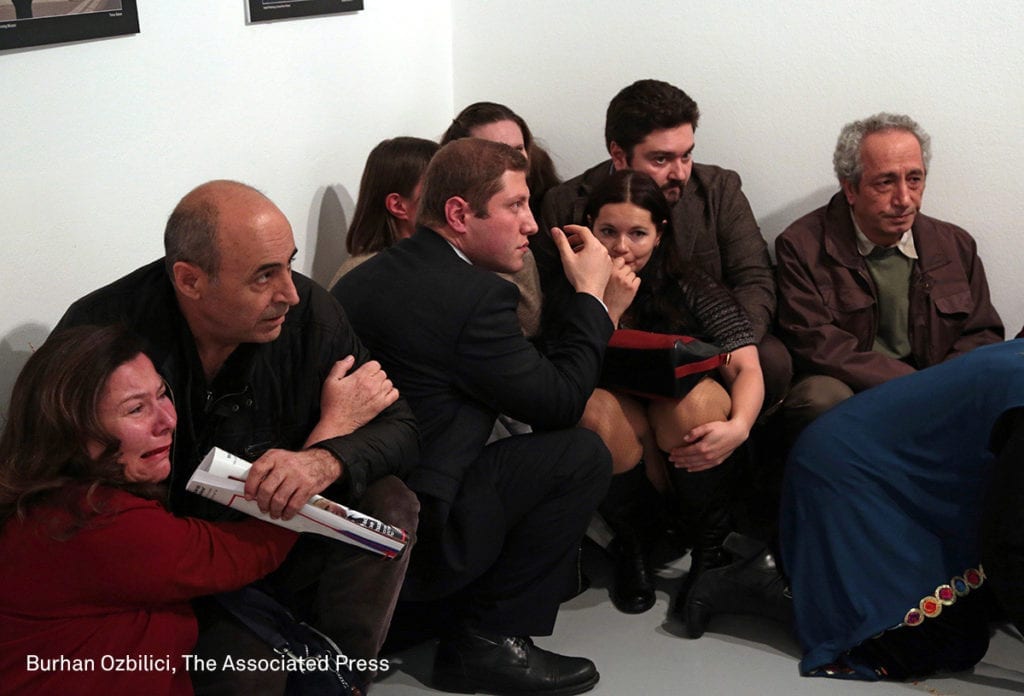Burhan Ozbilici wasn’t even working when he shot his World Press Photo-winning image – he was catching up with a friend, in an art gallery 150m from his home in Ankara. But, as the exhibition was a series of images of Russia, and the Russian ambassador Andrei Karlov was giving a speech, the Associated Press photographer “decided to do my job” and took his camera along.
Standing “two or three rows back” with the other members of the press, he started to record the unremarkable moment – then found himself at a murder scene, as gunman Mevlüt Mert Altıntaş shot the ambassador dead, then stopped to proclaim “revenge for Syria and Aleppo” over his body. “I immediately understood it was a very important incident,” says Ozbilici.
“Everyone ran away and threw themselves on the ground, or behind walls, or under tables, shouting and panicking. I thought running away was not a solution anyway, and decided to remain calm to risk antagonising the gunman further. I just kept shooting, changing my position to get a better angle, trying to capture this moment.”

The story, and particularly the World Press Photo-winning image, quickly went viral, but Ozbilici says he didn’t think about “how people might distribute it in social media, or how they might use it”. “I didn’t pay any attention to that, I was trying to do my work,” he says. “The assassination was of course political but I am not about this, I am only a journalist. I am trying to record, to document, to witness history.”

“I had the gunman in my face and of course it was risky, but I also had the freedom to do whatever I wanted, no one would block me or stop me. Freedom is the first value in my life.”
